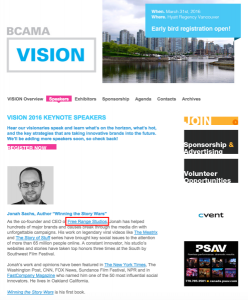
What is business process reengineering?
Like most buzzwords, business process reengineering (BPR) is a dull way to describe an interesting topic. Put simply, it’s the act of rethinking the way you do the important things in your business. It’s when you say “this is so inefficient it’s killing us”, and sit down to strategize how you can improve your processes in a radical and fundamental way.
In this article, I’m going to run through some case studies and explain how Taco Bell, Ford, and Google have reengineered their business processes to create change for the better in their businesses and save them from death by inefficient process. And so can you.
You need to cut out the work that doesn’t add value, but where do you even start when cutting down on the amount of processes you execute in your business? Let’s look a little deeper into the aims of BPR.
Why (and when) should you bother with BPR?
Your company is never too small to consider business process reengineering. At its heart, BPR is something enterprises do. When an uptick of just 2% efficiency could mean a few million in extra profit next year, you better give that thing a title and formalize it as a field of study!
With startups, however, it’s not so drastic. It might even be funny to call it BPR when it’s probably just a few people sitting in the same room agreeing to change the way they do things because they’re all sick of the extra work.
No matter what the company size, though, it’s never too early to start doubting the efficiency of the way you do things. Bad processes create problems that wear people down, and in small businesses you don’t have employees you can afford to be worn down — you don’t have the numbers.
In short, start now. Examine the way you do what you do, and start cutting out the work that doesn’t add value.
Start with a process if:
- the process is important
- the process is fundamentally broken
- the process can be feasibly changed
Here’s a few examples of BPR so you can get a tangible idea of what it involves.
Famous BPR Examples (And How They Did or Didn’t Work)p

Google redesigned its hiring process in the early days after a study revealed it was — to put it bluntly — utter garbage. In a 2013 interview with The New York Times, Laszlo Bock (SVP of people operations), said:
“We looked at tens of thousands of interviews, and everyone who had done the interviews and what they scored the candidate, and how that person ultimately pcerformed in their job. We found zero relationship. It’s a complete random mess”
What do you do when something like this happens? For a tech company like Google, the obvious choice is: turn to data.
After finding the famous “how many golf balls can you fit in Seattle’s sewer network?”-type questions to be nothing more than a way to make interviewers feel clever and superior, they moved away from random questioning and towards a structured, process-driven approach involving behavioral interviewing with fixed questions like “give me an example of a time when you solved an analytically difficult problem”.
By reengineering the hiring process, Google has become known as one of the most effective companies in the world at judging the right people to hire. It’s synonymous with finding great talent, not asking useless fluff questions.
Taco Bell

In 1983, Taco Bell was teetering on the verge of outright failure. As a $ 500m Mexican regional chain, it returned -16% annually before making a huge change to the way it did business.
Instead of preparing everything on-site from fresh, it implemented the sci-fi sounding K-Minus Program. What that actually meant, was that Taco Bell removed the kitchen from their restaurants. Hammer and Champy’s book on BPR details the process:
“In the new process, meat, beans, corn shells, lettuce, tomatoes and cheese for their products are prepared outside of the restaurant in central commissaries. At the Taco Bell restaurants, the food ingredients are prepared when ordered for customer consumption.”
What happened as a result of this change?
Well, that was back in the early ’80s when Taco Bell was an ailing chain confined to Mexico. Now, its doing $ 1.98b in annual revenue and serves 2 billion customers annually from 6,407 restaurants worldwide, according to Wikipedia.
Ford

Michael Hammer, co-author of Reengineering the Corporation, suggested to Ford a radical way to cut down on wasteful work: destroy all invoices.
It’s a classic case of moving away from paper-based operations and to a centralized company database. Enterprise Engineering Institute describe the improved process:
“In the new situation the buyer registers an order in an online database. The buyer no longer sends a copy of the purchasing order form to the creditor administration. When the goods arrive at the store, the storekeeper checks in the database whether the received goods correspond to the purchasing order form (nb: previously the employee did not receive a copy of the purchasing order form). If these correspond, the storekeeper accepts the goods and registers the reception of the goods in the computer system. If the store keeper cannot find data of the supply in the database, goods are simply sent back.”
The results of moving from paper invoicing to storing data in a central system were pretty staggering: a 75% decrease in accounts payable staff. These 75% were early victims of computers destroying jobs, but also representative of the salary money that can be saved with drastic BPR.
BPR best practices from the expert
American engineer, author, and computer science professor Michael Hammer pioneered business process reengineering in 1990s with his HBR article Reengineering Work: Don’t Automate, Obliterate. The article was a rallying cry for businesses who were finding little help from traditional process rationalization and automation. The general message? You’re not going to get anywhere with small changes. Rip it up and start again.

His changes in just two example companies rendered the work of hundreds of customer-facing employees useless and made dramatic changes in the efficiency of the business.
If anyone’s the father of BPR, it’s Hammer. A few years later, however, it was formalized by another American academic — Tom Davenport. Davenport laid the groundwork for a proper process companies can follow to reengineer their business processes:
- When identifying the process to be reengineered, pick the most important processes, or those that cause most conflict with business objectives. It’s less common for businesses to catalog all of their processes and reengineer every one.
- Before you start, understand and measure the existing processes using a method like business process mapping. This way, you won’t repeat your mistakes when drawing up a new process.
- Always think in terms of technology. As we’ve seen, Ford saved a ton of money by using a computer database instead of paper invoices.
- See the new process as a prototype, not a final copy. Adhere to agile methodology to get a draft out and iterate on it.
The process for implementing business process reengineering
Business & Finance Articles on Business 2 Community
(101)




